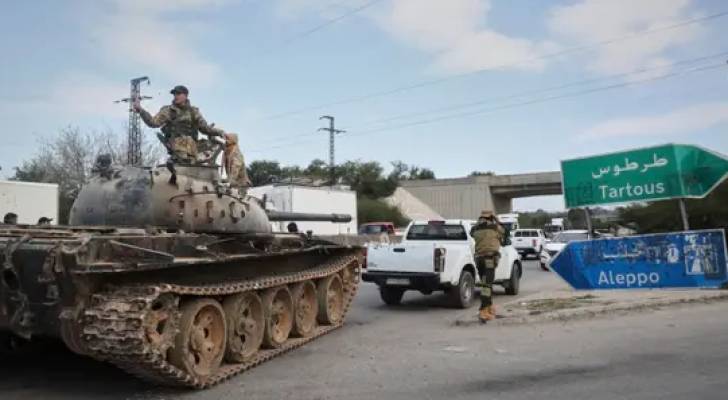Syrian probe identifies 298 suspects in coastal massacres, confirms 1,426 Alawite deaths
The Syrian National Investigation Committee announced Tuesday that it has identified 298 individuals suspected of involvement in violent acts during the coastal events, confirming the documentation of "serious violations" that led to the deaths of 1,426 members of the Alawite community whose names have been verified.
According to the Syrian Arab News Agency (SANA), committee spokesperson and lawyer Yasser Al-Farhan stated at a press conference that the victims include 90 women, with the remainder being civilians and former military personnel who had undergone settlement processes.
Farhan explained that the committee reviewed additional casualty reports from open sources but was unable to verify them due to the absence of names in cemetery records or witness testimonies. He added that the committee also received information about 20 missing persons, including civilians and members of government forces.
He noted that the committee used various methods to identify perpetrators, including digital evidence analysis and meetings with official and local entities. As a result, the committee identified 298 individuals by name as potential suspects.
Farhan said the committee observed a series of directives issued by Syrian President Ahmad Al-Shara, emphasizing the protection of civilians and adherence to the law.
The committee’s work covered field monitoring and investigations into assaults and violations in the provinces of Latakia, Tartous, and Hama. It also explored the circumstances that led to the outbreak of violence, abuses against civilians, and attacks on government institutions, military personnel, and security forces. The committee aims to refer those found responsible to the judiciary.
Farhan stressed the committee’s transparent communication with Syrians through media and direct meetings. It held discussions with community leaders, civil society actors, professional syndicates, and notable figures.
He noted that the committee completed its report within the designated timeframe and submitted it to President Al-Shara. However, public disclosure was delayed due to ongoing events in southern Syria.
The committee visited 33 locations, inspecting incident sites and burial grounds in the presence of local officials, religious leaders, and family representatives. It also held extensive meetings with dozens of community figures in various towns.
Farhan said the committee collected 938 witness statements—452 related to killings and 486 concerning armed robbery, looting, arson, or torture. Seven legal assistants from affected Alawite families helped document the testimonies, alongside three women from victims' families who participated in hearings held in Al-Rusafa.
Additionally, the committee interviewed 23 officials and interrogated detained suspects, referring their cases to the appropriate courts.
Farhan added that the committee engaged in high-level consultations with international bodies, including the UN Special Envoy’s Office, the Office of the High Commissioner for Human Rights, the UN Commission of Inquiry on Syria, Human Rights Watch, and Amnesty International to ensure adherence to international investigative standards.
He said that on March 6, armed groups known as “the remnants” launched coordinated attacks on army and public security posts, checkpoints, and patrols, cut off main roads, and killed 238 members of the army and security forces. According to the committee, some victims were executed after surrendering during negotiations, others were killed while receiving treatment, and some were executed while in captivity. Many were buried in a mass grave, and public roads and six hospitals were targeted, putting them out of service. The committee also received reports of Sunni civilian deaths, though their identities could not be confirmed due to lack of evidence.
The committee identified 265 individuals suspected of joining armed outlaw groups linked to former President Bashar Al-Assad’s regime. It cited sufficient evidence to suspect their involvement in serious crimes and violations.
Farhan explained that these groups, during and after the attacks, took partial or full control of towns, villages, and roads, imposed a blockade on remaining government sites, and sought to separate the coastal region from Syria. The goal, according to the investigation, was to establish an independent Alawite entity, supported and executed by well-organized groups operating under both vertical and horizontal command structures.
In March, Tartous and Latakia witnessed intense clashes between groups linked to deposed President Bashar Al-Assad and forces of the current government. The groups claimed they were attempting to “liberate” Syria from its present leadership. The fighting resulted in hundreds of casualties on both sides.




